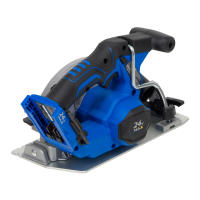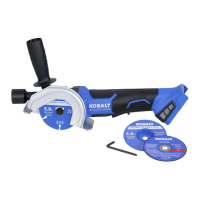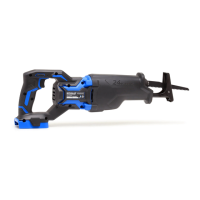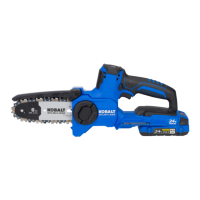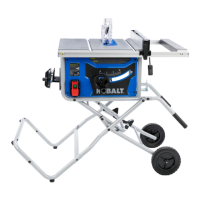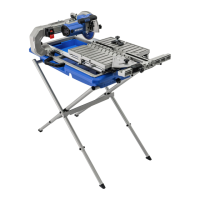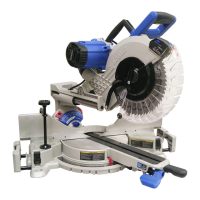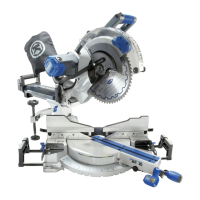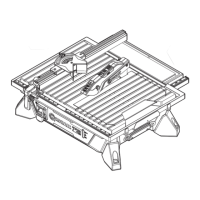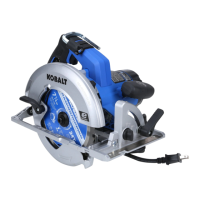39
kobalttools.com
OPERATING INSTRUCTIONS
DADOS AND OTHER NON-THROUGH CUTS
The use of a non-through cut is essential to cutting grooves, rabbets and dados. Non-through cuts
can be made using a standard blade having a diameter of 10 inches or less, or a dado blade up to
1/2 inches wide with a diameter of 8 inches or less. Non-through cuts are the only type of cuts that
should be made without the blade guard assembly installed. Make sure the blade guard assembly is
reinstalled upon completion of this type of cut.
Making a Non-Through Cut
WARNING
• To reduce the risk of serious injury when making non-through cuts, follow all applicable warnings
and instructions listed below in addition to those listed above for the relevant through cut.
• When making a non-through cut, blade (W) is covered by workpiece during most of cut. Be alert
to exposed blade (W) at start and nish of every cut to avoid the risk of personal injury.
• Never feed wood with hands when making any non-through cuts such as rabbets or dados. To avoid
personal injury, always use push blocks, push sticks, and/or featherboards.
• Read the appropriate section which describes the type of cut in addition to this section on non
through or dado cuts. For example, if your non-through cut is a straight cross cut, read and
understand the section on straight cross cuts before proceeding.
• Once all dado and non-through cuts are completed, unplug saw and reinstall riving knife (X) in
raised position. Install anti-kickback pawls (B) and blade guard (A).
• Always use push blocks and or push sticks, and/or featherboards when making dado cuts to avoid
the risk of serious injury.
1. Unplug saw.
2. Unlock release lever (O).
3. Adjust bevel angle to 0°.
4. Lock release lever (O).
5. Remove blade guard (A) and anti-kickback pawls (B).
6. Place riving knife (X) in “lowered” position.
7. Set blade (W) to correct depth for workpiece.
8. Depending on shape and size of wood, use either rip fence (T) or miter gauge (U).
9. Plug saw into power source and turn saw on.
10. Let blade (W) build up to full speed before moving workpiece into blade (W).
11. Always use push blocks, push sticks, and/or featherboards when making non-through cuts to
reduce the risk of serious injury.
12. When cut is made, turn saw o. Wait for blade (W) to come to a complete stop before removing
workpiece.
13. When cut is complete re-adjust riving knife to position as detailed on page 21.
Making a Dado Cut
Dado blades are stacked blades that can be used when making through cut slots in a workpiece, or
the non-through cuts described above. Dado blades require a special throat plate. Dado blades and
throat plates are all sold separately.
